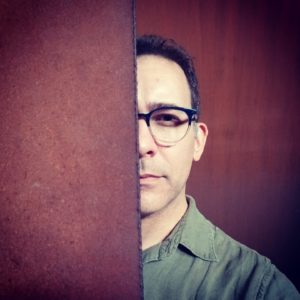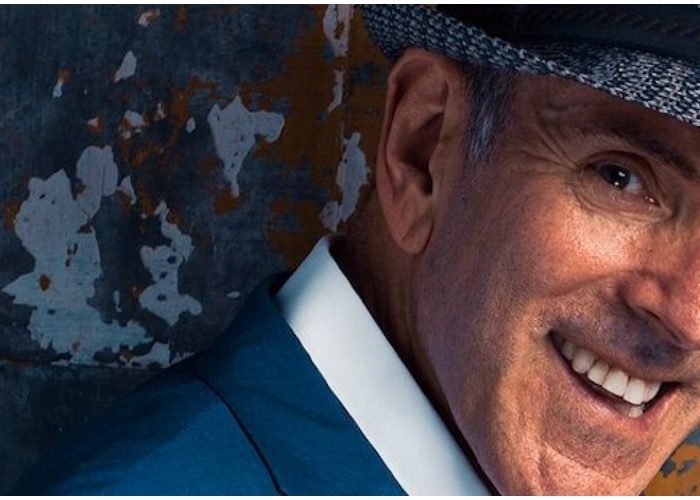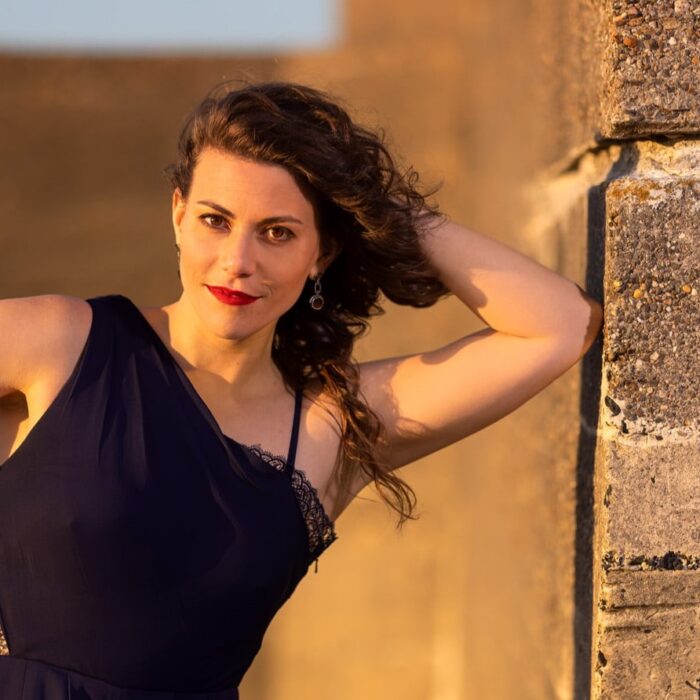
Q & A: American Opera Project’s Matt Gray on The Company’s Mission and Purpose
By John VandevertNew York City has a rich operatic scene, teeming with innovative companies on the creative forefront of the genre’s development as an artistic form. Led by General Director Matt Gray, the itinerant opera company American Opera Project, is a seminal player, pushing the creative hand of opera ever forwards.
In this ongoing series dedicated to the artists, composers, and companies dedicated to opera’s advancement, I ask the question “What is opera and what can it turn into?” No longer bound by antiquated edicts, artists can now use “opera” to make a statement: a profession of emotions and inner feelings that lie deep within their core. It is my goal, through interviews with all manner of people involved in the multifaceted world of “operatic theatre,” to examine projects and works with an aim of figuring out just what, exactly, it means to do opera in the 21st century: what is the statement that modern opera is trying to make?
In this interview, I got the chance to sit down with Matt Gray to discuss American Opera Project’s legacy, mission, and activities as an innovator and company dedicated towards new works. Founded in late 1988 by Grethe Barrett Holby, AOP has become a vital resource for creatives in the New York City opera scene.
Opera Wire: What is the American Opera Project and what does it do?
Matt Gray: American Opera Project, or AOP, is a New York City-based opera company dedicated to three things: giving resources and time for the workshopping of new operatic works by young composers; providing training for them through our “Composers and the Voice” program; and expanding into inter-community participation, making face-to-face connections with people, introducing them to the world of opera, and experimenting with this. Many of the works that we’ve helped develop at AOP have gone on to premiere with other companies. A lot of times, people don’t know who we are, but they know our operatic output and the works we’ve workshopped.
Others know about us through the operas which have gone on to become successful elsewhere and debuted with us. So we are other there, but sometimes behind the curtain. As for my role, I have been the General Director of AOP since 2019, but have been with the company since the early 2000s; first as an office manager with little operatic experience, before gradually developing myself alongside the company until I was offered the General Directorship in 2019.
OW: Why is opera important as an expressionistic artform? What is its function now in the 21st century?
MG: For composers, it’s an opportunity to write with one of the most versatile and challenging instruments—the human voice—in ways that no other style of art can provide. For the audience, they get to experience storytelling that is led by the voice in ways which many of us don’t normally come across in daily life. This is an innately human tool that other genres don’t possess. We’ve also produced many operas which don’t exclusively rely on singing in the classical style: we’ve mixed it with other styles. That’s exciting, regarding what opera could become. But, generally, opera’s importance lies in its capacity for storytelling and human expression. Just like jazz, painting, and sculpture, it allows the artist to express themselves in a way that other artforms don’t allow. There’s something specific and necessary a composer is looking for when they choose the operatic artform to tell their stories and express their views and emotion. The audience also get to experience something unique, due to the unification of so many artforms into a single showing.
Opera is such an amalgamation of various forms coming together to create a super-artform. That’s why it’s the most expensive to produce. But that’s also why opera can pull our purpose of being an individual and a member of the human race into focus. That being said, we don’t necessarily need Wagnerian ostentatiousness to tell that human story. We can now achieve that same impact and a thoroughly operatic experience, but set within a smaller venue with fewer people and fewer effects.
OW: You came to AOP in 2019 and modified its structure as a company. What was the catalyst for this change?
MG: The funny thing is that our mission has always been around, but it took time to put it into focus. When we were founded in 1988, under the name “American Opera Projects,” our founder was one who knew the dearth of opportunities in New York City for new and experimental opera. She led the company for many years before stepping aside to make way for new leadership. When I took over, it was more about thinking about what we’d already accomplished and seeing what needed to be done. It was, in large part, about honoring what AOP had accomplished thus far: AOP had formed itself as a company at the forefront of creating the identity of American opera. The slight name change—’Projects’ to ‘Project’—was not casting this history aside, but rather refocusing on the mission: a project of American opera. This project is to help determine what the constitution of American opera fundamentally is and how best to realize this.
OW: How did AOP become so important as a company? Was it the repertoire, the people, the time, the location?
MG: I wasn’t around for the first part of the company but part of its critical role now is because it was one of the few companies that was solely dedicated to creating truly new works. It was happening in the theatrical world at the time: this energy in the 1980s which encapsulated the Soho independent theatre scene. Our founder was an intrinsic part of that energy and aesthetic, that spirit of genuine creativity in new works. That was our company’s focus and what our founder latched onto at the very beginning.
There were no other operatic companies at the time that had a mission to produce new operatic projects. Just taking that risk, and inviting living composers and librettists to create in a safe, non-judgmental place, was major. It could survive at any level, meaning it could live without reaching Met.-levels of significance, because it wasn’t focused on the end product but rather on the creative process itself. It was more about providing a space where creators could test themselves and push their creative boundaries. Because there were very few spaces available, this proved to be a space where opera could take chances. Singers had the chance to sing in a loft in Soho, and composers and librettists worked on projects never before seen. There was this spirit of creation that was so strong, and one that I think our company has successfully kept alive to this day.
OW: What was life like during COVID for AOP?
MG: It was a scramble, like any other company. We have the good fortune of being without venue, or rather ‘venue-flexible.’ We are an itinerant company, like many companies. We were lucky, especially when one considers other companies who had to, unfortunately, lay off people and stop operating houses for a while. Our budget isn’t based so much on income streams like ticket sales, so we could have more adaptability during COVID and weather the storm. We were lucky there. We reached out to our creative teams and asked them how we could best sustain their creative process. We were seeing others be innovative as well, namely “What can we do with what we have?” We embraced in-home recording technology and at-home filming. But as soon as we could meet again, we did so. Under regulations, obviously, but it was life again, nonetheless. Overall, we managed and made the best of it, I think, with the shows we had already. We also thought it was wise to give the teams the option of holding off until the pandemic was over, but many of them were awesome and powered through the best they could. It was incredibly inspiring to see so many people want to continue creating.
OW: How has AOP’s view of opera as an “unending experiment in storytelling” become so pivotal to the company?
MG: It was naturally the direction we were going towards. When I took over leadership, I brought with me my take on music. My dirty little secret is that I don’t have any musical training or extensive experience with music. Except for the 20 years I’ve been producing opera, I don’t have any technical experience. I came from a theatre and film background, and when I started at AOP I was an office manager, just pleased to get a steady paycheck. One of my colleagues began to suggest that I should go see an opera, so I went to “Pelléas et Mélisande” by Debussy at the Met. My colleagues thought it was a big leap, but there it was.
For a long time at AOP, I was intimidated by the artform, and unsure of my contribution to it. How could I contribute? Then I leaned into my ignorance and reworked my thinking around it, and realized my value was in acting the role of the person with no musical experience: the audience we were conceivably trying to reach out to and help. I realized I had value within my own process—I bring a dense knowledge of other artforms—and was able to sit in the creative room and help reduce the amount of industry technicality, all for the common experience. Having that frankness to be able to say, without ambiguity, “It is not reading to me as important.” Listening with the candid ears of someone unaccustomed to the nuances of music helps. It does not compromise creativity: instead it opens it up. And by being able to bring in the knowledge of other artforms means I can help create meaning and express storytelling through avenues other than music, further aligning opera with storytelling as told through various lenses which many people may be more used to.
OW: What does AOP’s commitment to making American opera reflective of current times mean?
MG: There’ll always be adaptations of classical works to serve as reflections of modern ideals and topical themes. That’s never going to change, of course. We’ll always get Greek works and Shakespearean works adapted into opera. By no means am I saying that it should stop, but for the development of the artform today, and to ensure it thrives, it has to show that it can develop. It must show itself to be a medium for showing contemporary stories, not just ones that have already occurred. Otherwise, artists and musicians who are growing up today and looking towards music and voice of expression as their creative path, won’t connect with opera. If they don’t see that they have a place in opera and know that their stories belong in the genre, they won’t choose opera as a medium. They won’t know that opera can be a medium for their stories.
For opera to grow as an artform in the 21st century, it has to show that it can share the contemporary reality in a way that no other medium can. You don’t want to try to be the other artforms. Opera is its own thing and doesn’t have to be like anything else. There’s another thing too, and that’s opera in America. Opera is, by definition, a European artform. They have a lot more popular and state support and a very particular idea of what opera should remain as. Conversely, there’s a freedom in the American artform to take it to a different place, to synthesize life into art without the same kind of cultural outrage.
OW: Where do you see American opera going?
MG: I hope that the balance between new—I mean premieres—and classical works—I mean revivals—is maintained: opera can emulate the balance which theatre has found. Here there is equal excitement to see revivals, hidden or rarely produced works, and new works as well. The vibrancy of an artform where excitement stems so much from premieres is something which opera will greatly benefit from. It is in this direction that our generation is leaning. Our artforms must speak to the present, and opera has the ability to be a successful barometer for the contemporary, aesthetic mindset: the tenor of the nation. Consider the final award of the night at the annual Tony Awards. It is for the Best New Work of Our Generation. People are still in love with the classics, and yet are equally—perhaps even more—excited about new works. The premier is becoming the centerpiece.
There’s also a real need for bad premieres too: ones that are less potent but still just as valid. One of the hardest things for us right now is our unspoken inability to let a new work to fail. The pressure to succeed creates this notion that if a new work fails to generate interest, the composer will be left uninspired, audiences won’t come back, and that opera is apparently ‘dead’—this is a fallacy of the greatest kind! You have to make room to fail, and for audiences to not like one performance and come back again for another. There is reciprocity in the operatic ecosystem. People are committing to the company, and giving premieres their due justice, even if they do not always stick the landing. There’s a lot of pressure, and that’s why AOP is at the forefront and has such an important role: to help avoid the possibility of blowing it all on a high-risk premiere, or having extremely long stretches of downtime between premieres. We provide development workshops, and test new pieces a lot and as early into their development as possible. We figure out what works and what doesn’t. Opera needs more testing time and AOP is there to give composers the space, while also creating new audiences, expanding opera’s reach, and growing its’ viewership.


